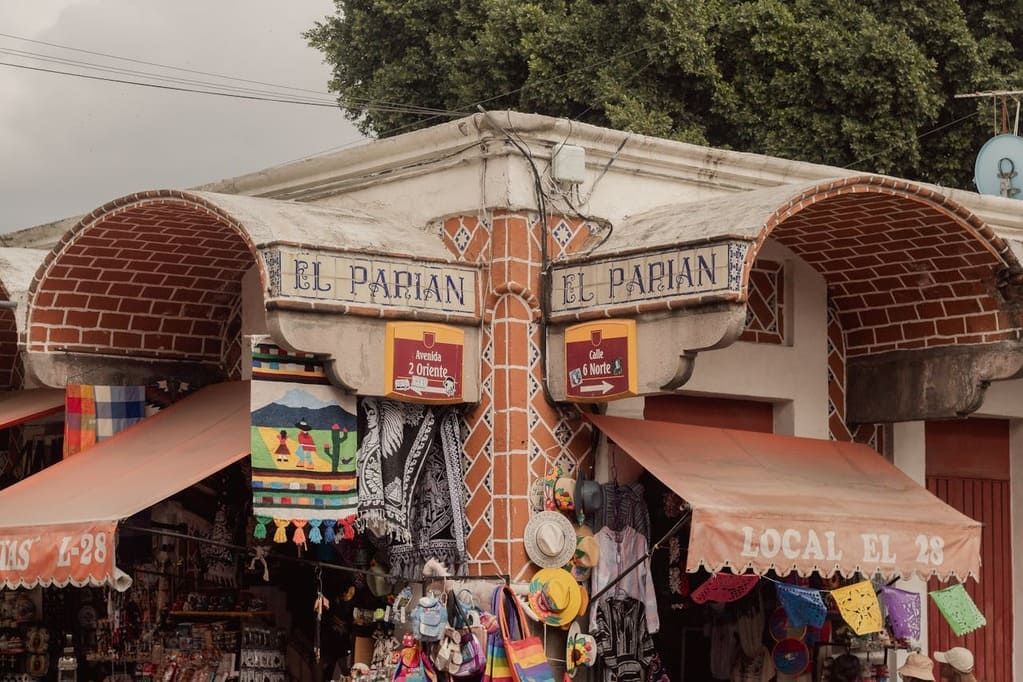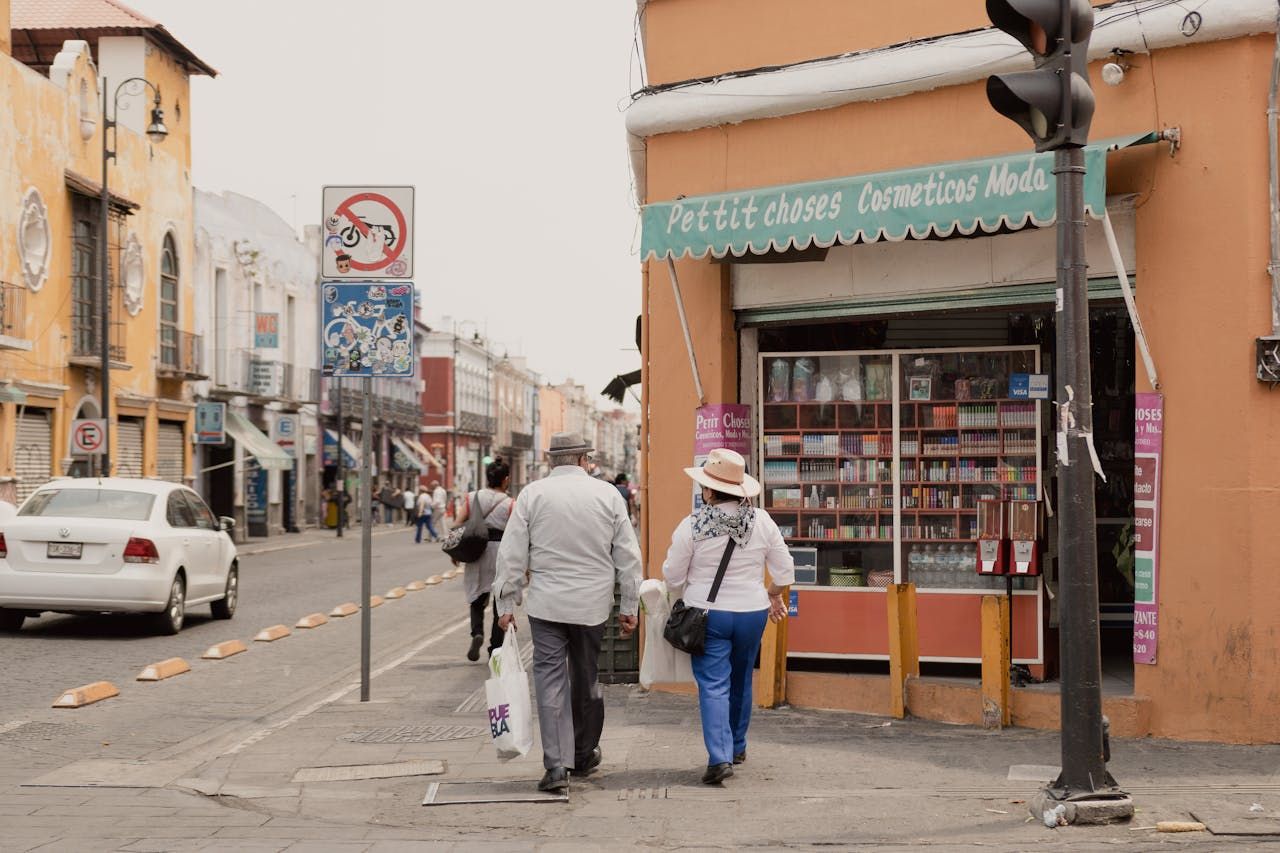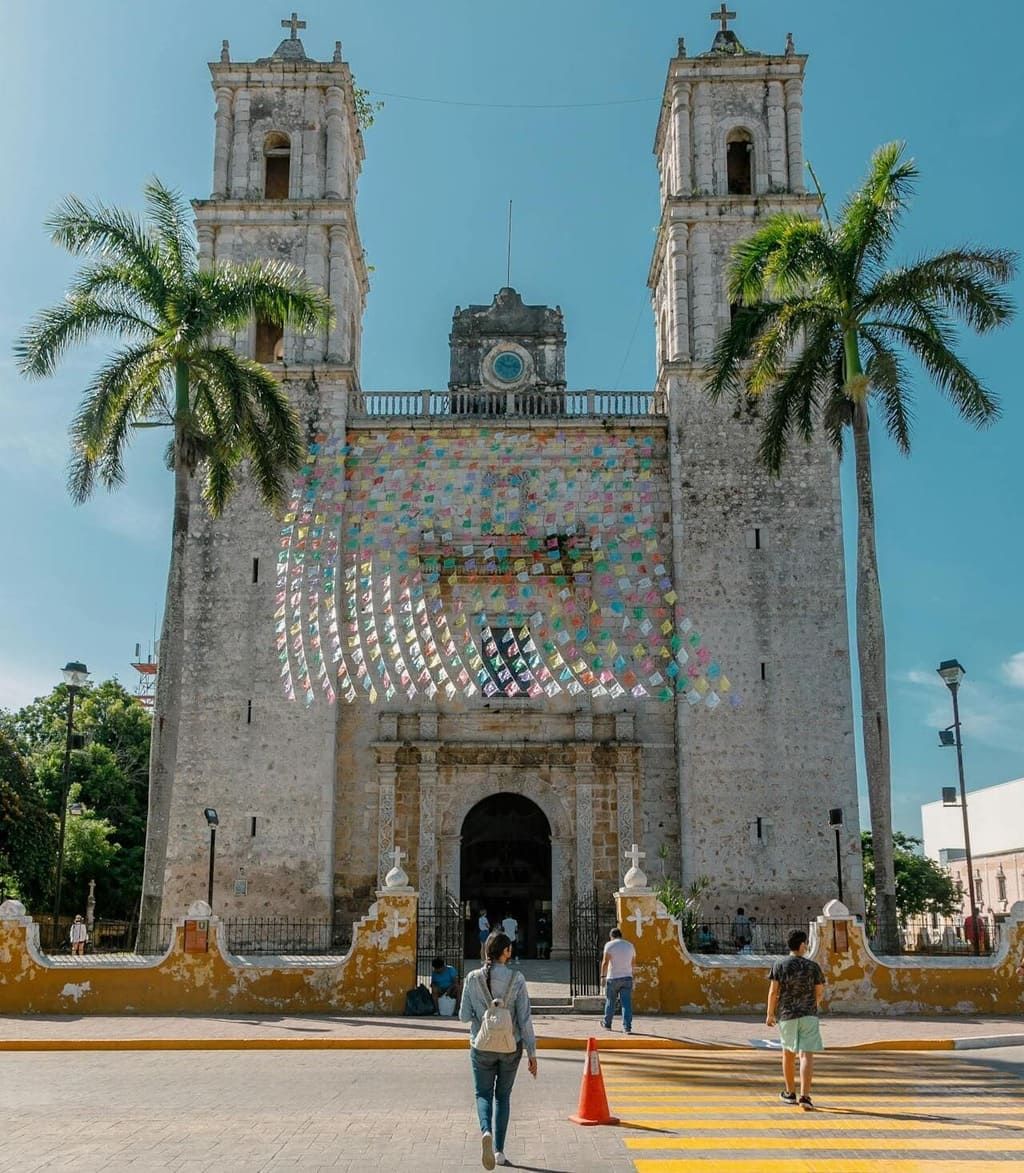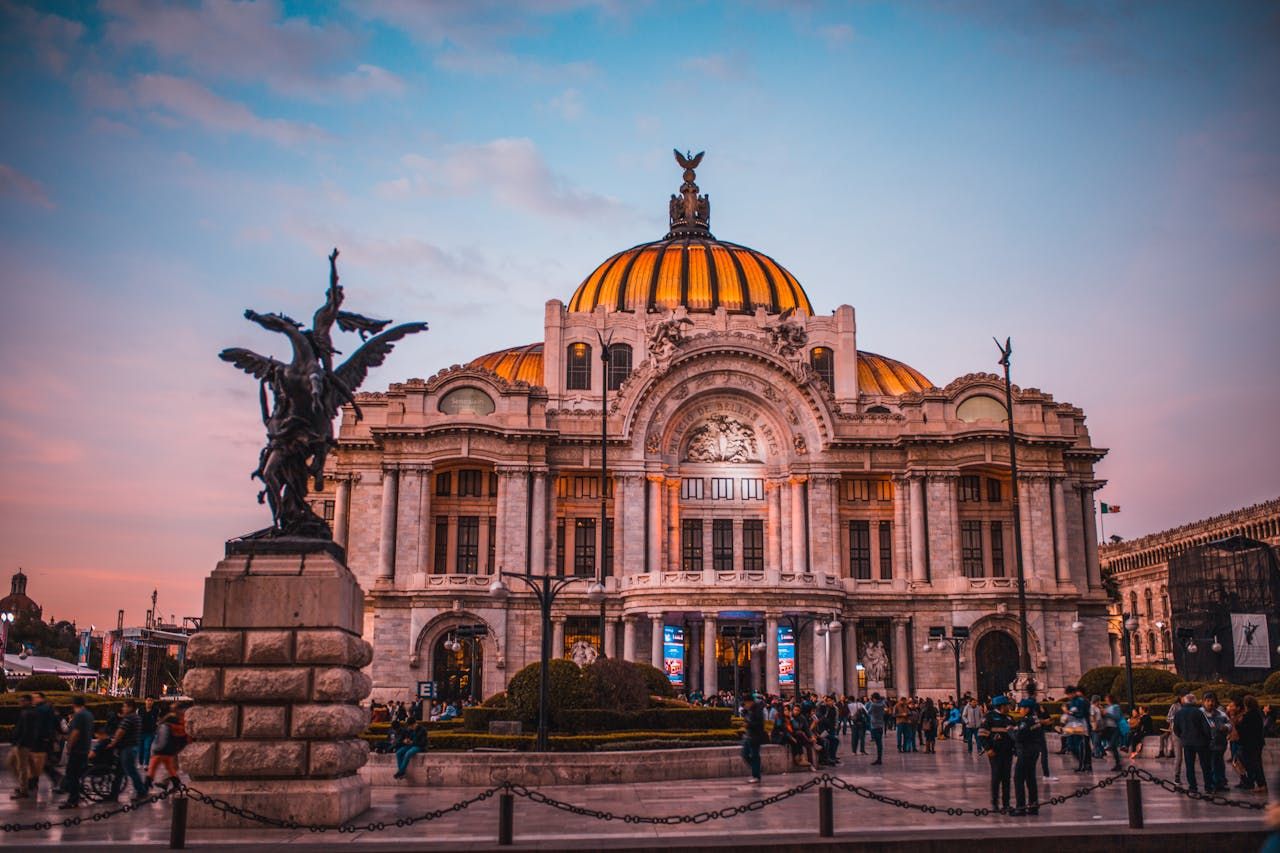Thinking about visiting Mexico but worried about safety? Many travelers are unsure which places are safe to visit. The truth is, Mexico has plenty of destinations where tourists can feel secure and have a great time.
In this article, we’ll show you exactly which cities and places are the safest to explore so you can plan your trip without stress and enjoy everything Mexico has to offer.

Picture by Jezael Melgoza on Unsplash
Safety in Mexico: The Good, the Bad, and the Mythical
Mexico often gets a bad reputation when it comes to safety. But the full story is more complicated than the headlines make it seem. Let’s take a closer look at what’s true and what’s overblown, and help you understand what’s really going on.
Many U.S. travel warnings and news reports paint all of Mexico with the same brush. But Mexico is a huge country, and safety can vary a lot from place to place. While some areas are affected by drug violence, most tourist spots are much safer than people think. In fact, when you look at the numbers, travelers in Mexico are often less likely to experience violent crime than they are back home. The homicide rate for American visitors to Mexico is approximately 2.1 per 100,000, much lower than the overall U.S. homicide rate. Popular tourist cities like Cancun and Puerto Vallarta have lower crime rates than places like Orlando, Florida.
It’s important to understand the difference between zones with drug-related violence and areas built around tourism. While no place is completely risk-free, most tourists aren’t the targets of cartel activity. That doesn’t mean that travelers shouldn’t stay aware, especially in states where recent incidents have occurred, like Baja California or Jalisco.
What “Safe” Really Means in the Mexican Context?
When people talk about safety in Mexico, they think about crime rates. But real safety is much broader than that. It also includes the feeling of being supported by the local community, the quality of healthcare and infrastructure, and even the climate.
In many areas, strong community connections and welcoming neighborhoods help create a sense of comfort and security for visitors. Travelers often feel safer in places where locals are friendly, helpful, and used to interacting with people from other countries. Access to healthcare is another important part of the picture. Being in a region with good hospitals or clinics nearby can bring peace of mind in case of illness or injury.
Infrastructure such as roads in good condition, reliable public transportation, and quick emergency services all add to a traveler’s sense of safety. On the other hand, areas with poor maintenance or slow response times might require a bit more caution and planning. It’s also worth thinking about natural elements. Some parts of Mexico are more exposed to hurricanes, flooding, or heat waves. Being aware of these factors and staying up to date on local advisories can help visitors stay safe and make informed decisions.
Finally, there’s the idea of cultural safety, a feeling that goes beyond physical security. This is about how welcome and accepted you feel in a new place. Local attitudes toward tourists, how easily you can communicate, and the way cultural differences are handled all play a part. In many parts of Mexico, visitors are warmly received, which adds a real sense of ease and belonging.
Our Safety Index of Travel-Readiness (SITR)
Instead of just looking at crime stats or travel warnings alone, our Safety Index of Travel-Readiness (SITR) gives you a quick and clear look at how travel-friendly and secure each destination is:
-
Visible police presence (Do you see police around, especially in tourist areas?)
-
Emergency access (Are clinics and English-speaking help easy to find?)
-
Community involvement (Are locals and tourism groups working to keep things safe and welcoming?)
-
Nighttime walkability (Can you comfortably walk around after dark?)
-
Digital nomad and solo travel friendliness (Is there Wi-Fi, coworking, and a good social scene?)
Mexico’s SITR Scoreboard
Here’s how 10 popular Mexican destinations stack up across these categories:
| Destination | Police Presence | Emergency Help | Community Support | Walkability at Night | Solo/Digital Nomad Friendly |
|---|---|---|---|---|---|
| Cancun | High | High | High | Moderate | High |
| Playa del Carmen | High | High | High | High | High |
| Mexico City | Moderate | High | Moderate | Moderate | Moderate |
| Puerto Vallarta | Moderate | Moderate | High | Moderate | High |
| Cabo San Lucas | Moderate | Moderate | Moderate | Moderate | Moderate |
| Merida | Low | Moderate | High | Low | Moderate |
| Tulum | Low | Low | High | Low | High |
| La Paz | Low | Low | Moderate | Low | Moderate |
| Guadalajara | Moderate | Moderate | Moderate | Moderate | Moderate |
| Oaxaca City | Low | Low | Moderate | Low | Low |
We created the Safety Index of Travel-Readiness (SITR) to go beyond crime stats and rate destinations based on on-the-ground travel experiences across five key areas.
For solo travelers and digital nomads, Playa del Carmen and Cancun are top choices thanks to their strong infrastructure, safety, and welcoming communities. However, destinations like Tulum and Merida, while charming during the day, require more caution at night and aren’t the best places to walk alone after dark. Access to emergency services is also important, and Cancun is better equipped with clinics and English-speaking staff if you need help.
Hidden-Safe Gems in Mexico
La Paz, Baja California Sur
La Paz is a peaceful city in Baja California Sur that many travelers miss because they head straight to nearby Cabo San Lucas. But if you want a quieter, cleaner place that’s easy to explore on foot, La Paz is worth a look.
One of the coolest things about La Paz is the chance to swim with whale sharks early in the morning. What makes it even better is the strong local eco-tourism community that works hard to protect the environment and make sure visitors have a respectful, meaningful experience.
Even though there’s a travel advisory for parts of Baja California Sur because of some safety concerns, La Paz itself is usually safe for tourists. Crime is low here, and violent incidents rarely involve visitors. Still, it’s smart to stay aware of your surroundings and keep an eye on your belongings, just like anywhere else.
Healthcare and emergency services are available, though not as large as in bigger cities. The U.S. government advises travelers to “exercise increased caution” in Baja California Sur, which is similar to many parts of Europe. This means being careful, but it doesn’t mean you shouldn’t visit. In fact, La Paz’s focus on eco-tourism and the slow pace of life make it a great, safe alternative to busier tourist spots.
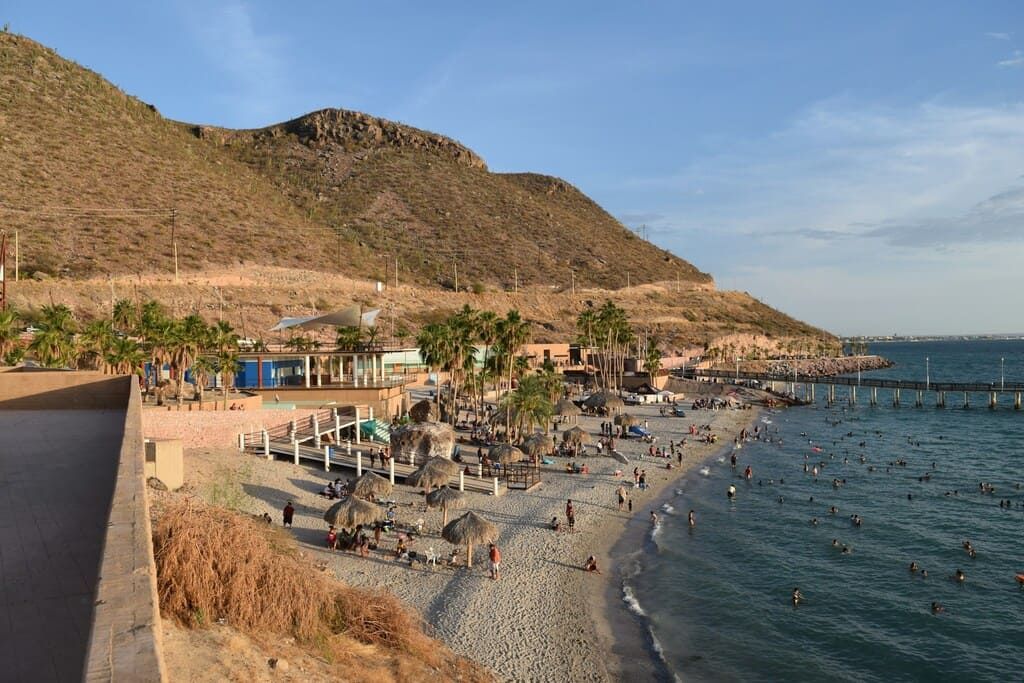
Photo by Alejandro De Casso on Unsplash
Valladolid, Yucatán
Valladolid is a colonial city in Mexico’s Yucatán state, famous for its beautiful cenotes (natural sinkholes) and Maya history. It’s also close to amazing archaeological sites like Chichen Itza and Ek Balam.
One of the best things about Valladolid is how safe it feels. The city has a low crime rate and is known as one of the safest places in Mexico. Violent crime is very rare here, and women traveling alone generally feel safe. As in any unfamiliar city, avoiding dark streets at night and dressing modestly can help reduce unwanted attention and promote safety.
The local Maya communities take great pride in their culture and work hard to protect both visitors and residents. Many guesthouses are run by indigenous families, creating a friendly and trustworthy atmosphere where travelers can enjoy a more authentic experience.
Valladolid isn’t at risk for major natural disasters like earthquakes or hurricanes, and the city has good healthcare and emergency services. The local community is actively involved in tourism.
Mineral de Pozos, Guanajuato
Mineral de Pozos, also known as San Pedro de los Pozos, is a small town in Guanajuato that used to be a busy mining center. When the mines closed in the early 1900s, the town slowly emptied out. But since 2012, it’s been recognized as a Pueblo Mágico, a special title for places with rich culture and history.
Today, Mineral de Pozos is a quiet, peaceful spot popular with artists and visitors who want to enjoy calm and creativity. You can visit old mining ruins, historic haciendas, art galleries, and local shops. The town also hosts festivals with music and films that celebrate its traditions. It’s a great place for walking around and taking photos.
Mineral de Pozos is about an hour from San Miguel de Allende and a little over two hours from Querétaro. While public transport is limited, it’s still a good choice for a day trip or a quiet getaway. Because it’s not overrun with tourists, you won’t have to worry about crowds or scams. It’s a hidden gem for anyone looking for a peaceful and authentic experience.
Todos Santos, BCS
Todos Santos, a small town in Baja California Sur, is known for its focus on sustainable tourism and a friendly community made up of both locals and many artist expats. It’s a safe place to visit, with very little violent crime aimed at tourists.
The town is easy to explore on foot, with lots of art galleries, restaurants, and shops near the main square. It’s generally safe to walk around during the day and evening, but it’s best to avoid dark or quiet areas at night. Many solo female travelers, including surfers and yogis, love Todos Santos because of its peaceful vibe and supportive community. The nearby beaches are great for surfing, but swimmers should watch out for strong currents and rip tides.
The U.S. State Department gives Baja California Sur a Level 2 safety rating, meaning travelers should be a bit cautious, but it’s about as safe as many places in Europe. The most common problem is petty theft; some scams can happen, especially with taxis and money exchanges. Healthcare and emergency services are available if needed, and the town’s close-knit community helps keep things safe for visitors.
Micro-Neighborhoods That Feel Like Fortresses
If safety is important to you while traveling or living in Mexico, some neighborhoods show strong communities, good security, and safety habits that feel like safe little fortresses. In Mexico City, places like Condesa, Roma Norte, and Coyoacán are popular because they are generally safe, with low crime mostly limited to small thefts.
Down on the Pacific coast, Puerto Escondido’s La Punta neighborhood is known for its close community of locals and eco-conscious expats who use WhatsApp groups to share safety updates, surf conditions, and arrange safe rides. Crime here is low, and a visible tourism police force helps keep visitors safe. The surf culture creates a respectful and welcoming environment.
Where You’ll Feel Seen, Welcomed, and Respected
Traveling is about discovery, but it’s also about feeling safe and welcome. In Mexico, more and more places are making that a priority.
In cities like Oaxaca City and Mérida, you’ll find women-led tours that focus on real cultural connections. These aren’t your average sightseeing trips; they include visits to women-owned artisan shops, local markets, and historical sites like Monte Albán and Hierve el Agua. You can even try traditional crafts like weaving or mezcal-making, all while learning from local women who share their stories and culture. Many hostels here also offer women-only dorms and nightly check-ins, creating spaces where solo female travelers feel comfortable and supported.
For LGBTQ+ travelers, spots like Mexico City’s Zona Rosa, Puerto Vallarta, and Zipolite Beach stand out as welcoming and vibrant. Zona Rosa is the heart of Mexico’s LGBTQ+ scene, full of bars, clubs, and events, plus a strong sense of community. Puerto Vallarta has a lively Pride festival, queer-friendly beaches, and a fun, open vibe. In laid-back Zipolite, it’s all about freedom and acceptance. In places like Cancún, Playa del Carmen, and Los Cabos, the LGBTQ+ scene is also growing, with inclusive resorts and nightlife. Many travelers say what makes them feel safe is not just the fun, it’s seeing others like themselves and knowing the community is visible and supported.
Travelers of color, especially Black travelers, will find a deep and powerful connection in Mexico’s Afro-Mexican communities, in the Costa Chica region (covering parts of Oaxaca and Guerrero). Towns like Cuajinicuilapa celebrate Afro-Mexican history with festivals, food, music, and traditional dances. You’ll find places like the Museo de las Culturas Afromestizas, and events such as the Encuentro de Pueblos Negros, which center on Black identity and culture. There are also Black-owned businesses and community tours that offer a welcoming, respectful experience, one where culture isn’t just observed but shared. Similar Afro-Mexican communities also exist in Veracruz and other parts of Oaxaca, offering travelers the chance to support local traditions and learn something meaningful.
Nature, Infrastructure, and Health Risks
Some cities, like Mérida in Yucatán, are known for excellent hospitals with English-speaking staff and good emergency services. Mexico City, Guadalajara, and Monterrey also have strong healthcare options. But in smaller towns or rural areas, medical care can be limited, so it’s wise to plan ahead.
Natural disasters are another factor. Mexico’s hurricane season runs from May to November, with the biggest storms usually hitting between August and October. Coastal areas like the Yucatán Peninsula, the Gulf Coast, and parts of the Pacific are most at risk. Storms can bring heavy rain, flooding, power outages, and travel delays. If you’re visiting during this time, it’s smart to check weather updates, have travel insurance, and avoid high-risk areas when storms are expected.
Mexico also has amazing outdoor spots for hiking and exploring, but safety depends on where you go. National parks near major cities often have marked trails and guided tours, which are great options. But hiking alone in remote areas isn’t a good idea because of rough terrain, wildlife, and poor emergency access. Walking in city parks at night, like Chapultepec in Mexico City, can be okay in safer neighborhoods, but staying alert is always important.
The Truth About Safety in Mexico
Safety in Mexico isn’t black and white. It varies depending on the places you visit and how careful you are. While most travelers enjoy their trips without problems, sometimes unexpected situations come up, like needing a reliable ride late at night or quick access to health services. That’s why having a way to stay connected is so important. With a FREE Yoho Mobile eSIM, you can easily keep in touch, helping you feel more secure while discovering all that Mexico has to offer
FAQs About the Safest Places in Mexico
Is it safe to drive in Mexico at night?
Usually, no. Driving at night can be risky because roads often don’t have streetlights, and you might run into animals, potholes, or broken-down cars. Crime is also more likely after dark, especially outside big cities. That said, night driving is safer in places like Mexico City, Guadalajara, or Tijuana, where roads are better and better lit. Toll roads are also in better shape and sometimes safer at night, but it’s still best to avoid driving after dark, especially if you’re new to the area.
Are the police helpful or corrupt?
Both. In many tourist areas, police are helpful and used to working with travelers. But in other places, you might run into corruption or be asked for a bribe. If you’re stopped, stay calm, be polite, show ID, and don’t admit fault. If asked for money, ask to go through official procedures instead. Try to deal with tourist police when possible; they’re more reliable. Reporting problems can help hold people accountable.
How can you tell if an area is safe?
Look around: if kids are playing outside, women are walking alone, and the streets are clean and busy, that’s a good sign. Safe areas usually feel active and well-kept, even in the evening. Good lighting, working traffic signals, and police presence also help. On the other hand, empty streets, lots of graffiti, and damaged buildings may signal a less safe place. Watching how locals use public spaces is often the best clue.
Is Uber safer than taxis in Mexico?
Yes, in most cases. Uber drivers are checked before being allowed on the app, and trips are tracked by GPS, so you can share your ride info. It’s also cashless, which makes things safer for both you and the driver. Regular taxis usually take cash and aren’t always well-regulated. In some places like Cancun, there’s tension between taxi drivers and Uber drivers, so be cautious. But in most big cities, Uber is the safer bet.
What’s the safest way to use an ATM?
Use ATMs inside bank branches during the day. They’re usually more secure and less likely to be tampered with. Stick with well-known banks like Banamex, Santander, or BanCoppel. Avoid using outdoor ATMs at night or in quiet places. It’s also smart not to use the same ATM too often, so you don’t draw attention. ATMs inside big supermarkets or malls are another good option.

